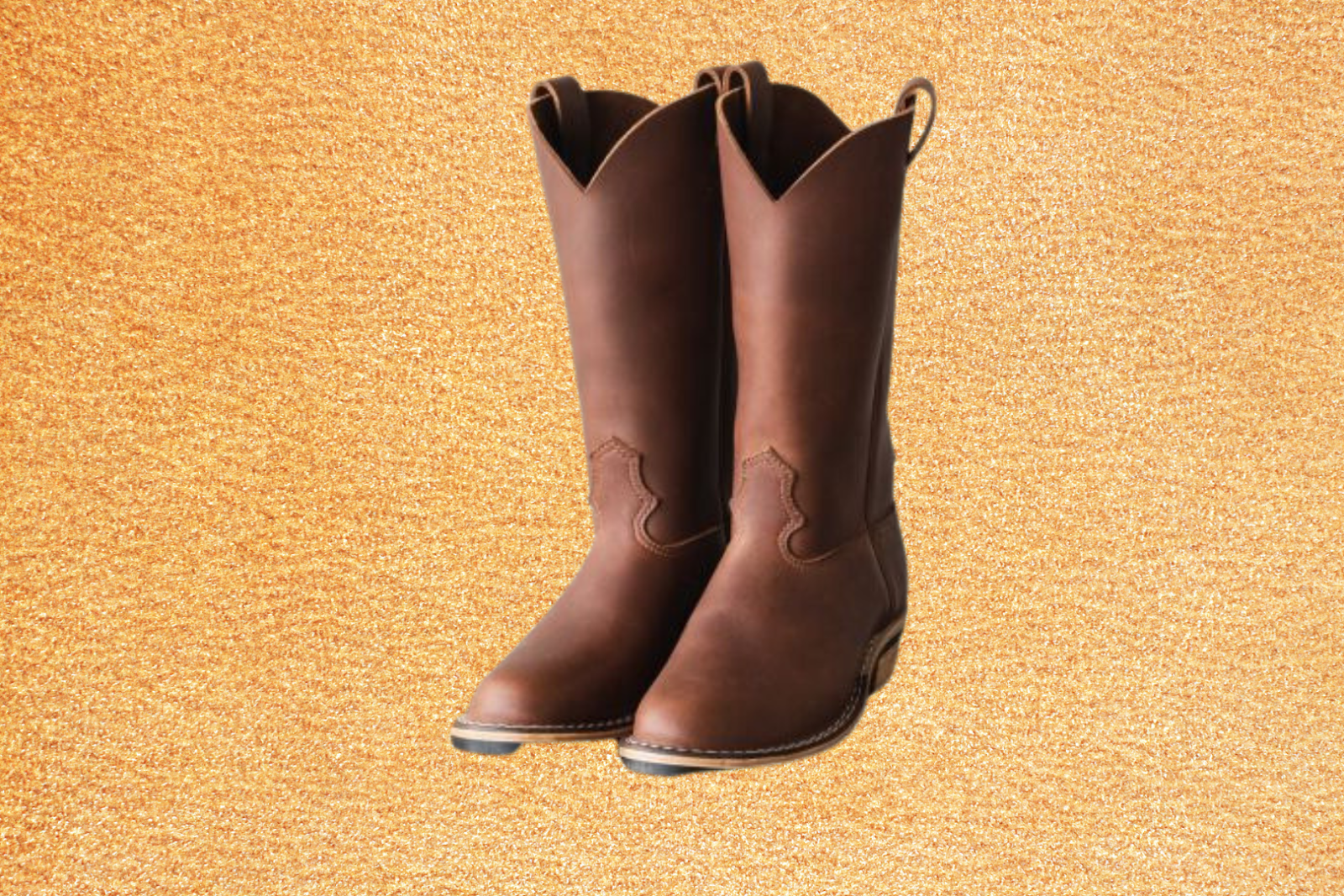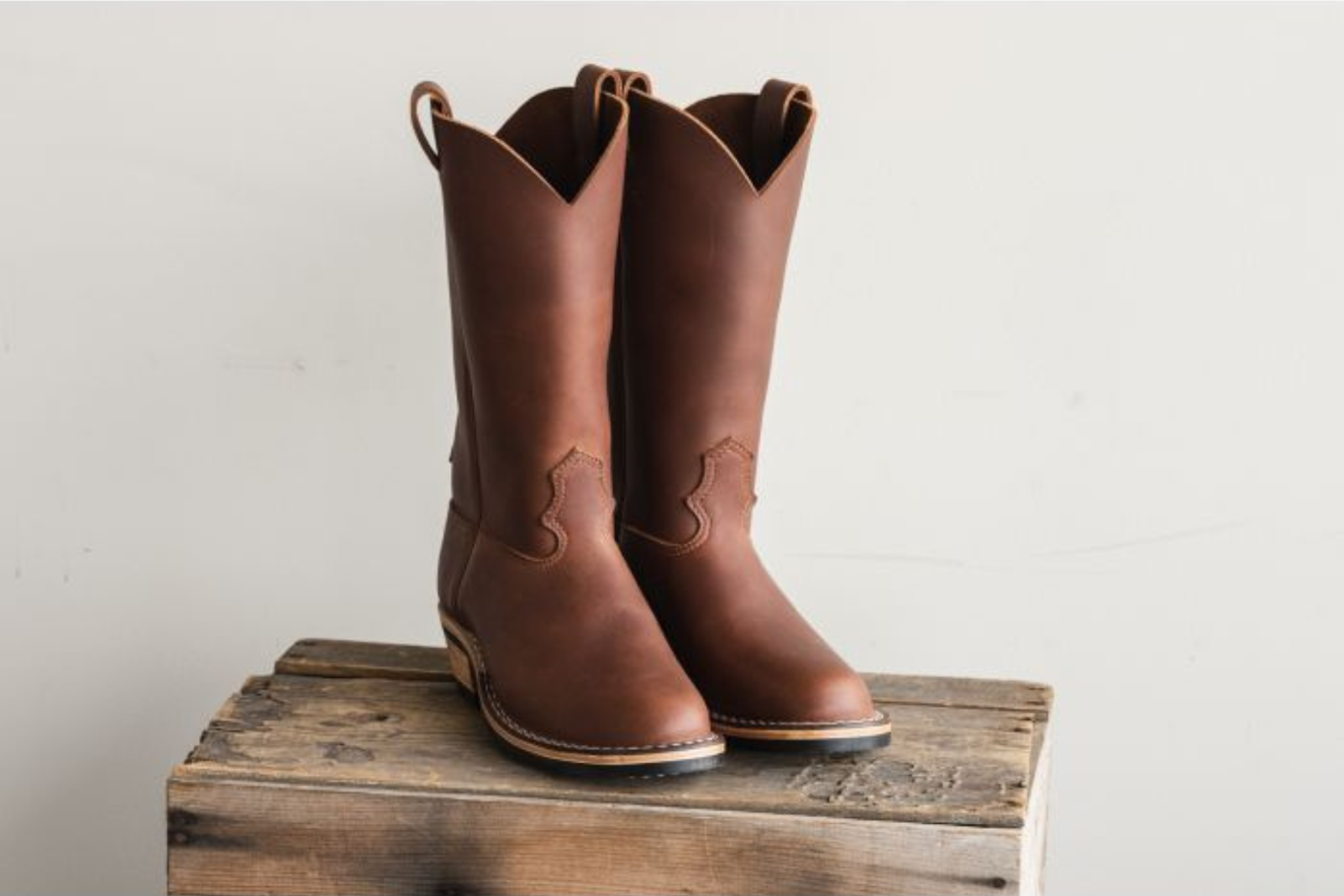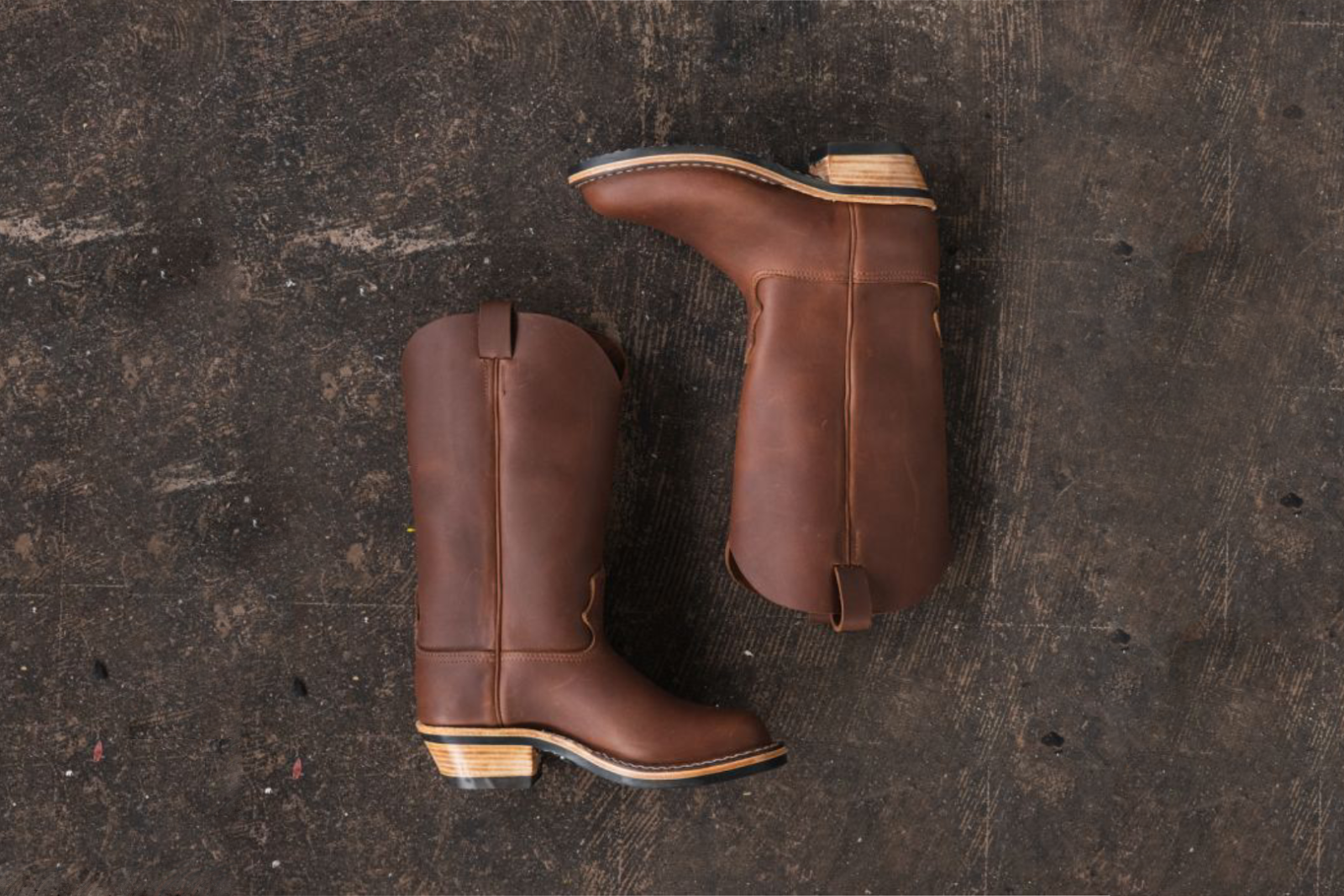Most of us are familiar with the iconic image of rugged cowboys going about their daily activities on the ranch, clad in their trusty work boots. These boots have become synonymous with durability, functionality, and style, serving as a testament to the resilience and hardworking spirit of those who call the frontier their home.
However, while these boots are renowned for their toughness and ability to withstand harsh environments, comfort is often a lesser-known aspect that deserves equal attention.
In this article, we will explore the intersection of Western work boots and comfort, delving into the features and technologies that make these boots reliable and a pleasure to wear during long work hours.
Ready to find the right boot that will offer the comfort, protection, durability, and style you need? Discover our collection of high-quality leather boots here at Nicks Boots.
Shop now to secure the right pair for your unique needs!
What Are Western Work Boots?
Western work boots are a type of footwear that combines the rugged durability of traditional work boots with the iconic style of Western cowboy boots. These boots are designed to provide exceptional comfort, protection, and functionality, making them ideal for individuals engaged in physically demanding occupations or outdoor activities.
They typically feature sturdy construction, with reinforced toe caps and slip-resistant outsoles, offering enhanced safety in work environments. They also incorporate elements such as intricate stitching, decorative patterns, and ornamental details, reflecting the rich heritage of Western fashion.

History Of Western Work Boots
Western work boots have a long and rich history that dates back to the 1800s.1 During this time, cowboys and ranchers needed a boot that could withstand the harsh and rugged terrain of the American West.
The traditional Western boot was designed with tough leather and a higher heel to ensure stability while riding a horse. It also featured a higher shaft to keep debris and dirt from entering the boot. This was especially important for cowboys and ranchers, who were often riding in dusty and dry climates.
Over time, ranchers and cowboys began to recognize the need for additional features in their work boots to provide comfort and protection in their physically demanding occupations. Manufacturers started incorporating steel toes to protect the feet from heavy objects and accidents.
In the mid-20th century, advancements in manufacturing technology led to the introduction of more durable and resilient materials, such as synthetic leathers and rubber soles. These materials improved the longevity and performance of Western work boots, making them even more practical for challenging work environments.
Today, Western work boots continue to be highly regarded for their durability, comfort, and versatility. They are widely worn not only by ranchers and cowboys but also by construction workers, outdoor enthusiasts, and individuals seeking a rugged yet stylish footwear option.
Benefits Of Western Work Boots
There are numerous benefits to wearing Western work boots, making them a popular choice among individuals in various industries. Some of these benefits include:
1. Safety: They often feature reinforced toe caps, such as steel or composite materials, providing protection against heavy objects or accidental impacts. These boots' sturdy construction and ankle support also reduce the risk of sprains or twisted ankles while navigating uneven terrain or working on slippery surfaces. Furthermore, many Western work boots come with slip-resistant soles, enhancing traction and minimizing slips and falls in hazardous work environments.
2. Comfort: Western work boots also offer exceptional comfort, thanks to their roomier toe box structure, lower and chunkier heel, and breathable materials. The combination of all these comfort features ensures that individuals can focus on their tasks without the distraction of uncomfortable footwear.
3. Style: Whether you're working on the ranch or just enjoying a day out in the countryside, Western work boots add a touch of style to your outfit. With their distinctive design, featuring decorative stitching, intricate patterns, and high-quality leather, these boots can elevate your look while providing the functionality and durability required for demanding work environments.
What Makes A Good Western Boot?
A good Western boot should be comfortable and durable, allowing you to work hard and look good. The key components of a good Western boot include:
Boot Upper
The upper part of a good Western boot is typically made from high-quality leather, which provides both durability and flexibility. Look for boots with a full-grain leather upper, as they offer superior strength and wear and tear resistance. Additionally, a well-designed boot upper should provide ample ankle support and a snug fit to ensure stability and prevent blisters or discomfort during long hours of wear.
Boot Insole
The boot insole is another crucial component of a good Western boot. It should offer sufficient cushioning and support to keep your feet comfortable throughout the day. Look for boots with a well-padded insole that absorbs shock and provides arch support. A quality insole also helps with moisture management, allowing your feet to breathe and preventing odor buildup. Some Western boots may even feature removable or replaceable insoles, allowing you to customize the level of cushioning and support according to your preferences.
Outsole And Heel
The outsole and heel of a good Western boot play a significant role in providing stability, traction, and longevity. A durable and slip-resistant outsole, typically made of rubber or leather, ensures that you can confidently navigate various terrains without the fear of slipping or losing your footing. Look for boots with a well-constructed outsole that is resistant to abrasion and can withstand the demands of outdoor work or activities.
Additionally, the heel of a Western boot should provide adequate height and stability, allowing for a comfortable walking stride and helping to maintain proper posture. Different heel styles, such as cowboy heels or walking heels, offer varying levels of support and are suitable for different purposes. So choose one that aligns with your needs and preferences.
Boot Shank
A boot shank is a strip or plate located between the insole and outsole of the boot. A high-quality boot will have a shank made of strong materials such as steel or stiff leather, which helps distribute the weight evenly and prevents the boot from collapsing under pressure. The shank also enhances arch support, reducing fatigue and promoting proper foot alignment, especially during rigorous activities like riding or working on uneven terrain.
Looking for high-quality Western boots that tick all these boxes? Check out Nicks Boots today! With our wide selection of Western boots (crafted with premium materials and attention to detail), you'll find the perfect pair to suit your needs and style.
Shop now and experience the comfort and durability that only a well-made Western boot can provide!
Types Of Western Boots
Western boots come in a variety of styles and designs to suit different needs. Whether you're looking for a pair of boots for work, fashion, or riding, there's a style to fit your needs. Here are some of the most popular types of Western boots available:
Cowboy Boots
Cowboy boots are a popular and iconic style of Western boots. They are characterized by high shafts reaching the mid-calf or higher, typically featuring decorative stitching or patterns. They also feature a slanted heel, ranging from a low cowboy heel to a higher stacked heel, providing riding stability and comfort.
These boots are designed to withstand the rigors of working on horseback and are commonly made of durable materials such as leather or exotic skins like snakeskin or alligator.
Western Riding Boots
Western riding boots are specifically designed for horseback riding and are favored by equestrians and cowboys alike. These boots prioritize functionality and provide the necessary support and grip for riding horses.
They typically have a lower shaft compared to cowboy boots. The heels are slightly raised to prevent the foot from sliding through the stirrup, ensuring rider safety. Also, they often feature reinforced toes and heels for added durability and protection.
Usually, these boots are made from sturdy leather and may incorporate additional features such as spur rests to accommodate the attachment of spurs for more advanced riders.
Whether you're a seasoned rider or just starting out, Western riding boots are a reliable choice for comfort and performance in the saddle.

Western Fashion Boots
These are a stylish option for those who want to incorporate Western flair into their everyday outfits. They often feature decorative elements like embroidery, studs, or fringe, adding a fashionable touch to the boots.
While they may not have the same level of functionality as cowboy or riding boots, Western fashion boots prioritize comfort and style. They are typically made from high-quality leather or synthetic materials, providing a comfortable fit and durability.
What To Look For In Western Work Boots
When looking for a pair of Western work boots, there are several things to consider:
Outsole Materials
The type of material used for the outsole of Western work boots is crucial for providing traction and durability. Look for boots with high-quality rubber or oil-resistant rubber outsoles, as they offer excellent grip on various surfaces and can withstand the demands of different work environments. Some boots may also feature slip-resistant or heat-resistant outsoles, which can be advantageous for specific job requirements.
Synthetic Vs. Leather Uppers And Shafts
When considering the upper and shaft materials of Western work boots, you'll encounter the choice between synthetic and leather options.
Leather uppers and shafts are known for their durability, flexibility, and ability to conform to the wearer's feet over time, providing a comfortable fit. They also tend to be more resistant to abrasions and punctures, making them suitable for rugged work environments.
On the other hand, synthetic materials such as synthetic leather or nylon offer advantages such as being more affordable, lightweight, and easier to clean.
The choice between synthetic and leather ultimately depends on your preferences, intended use, and budget.
Essential Safety Features
Some common safety features to consider include toe caps, which provide impact and compression protection for the toes; electrical hazard protection, which insulates against electrical shocks; and puncture-resistant plates, which shield against sharp objects on the ground.
Assess your work environment and the specific hazards you may encounter to determine which safety features are necessary for your Western work boots.
Various Toe Shapes In Western Boots
Western boots come in a wide range of toe shapes, each designed to cater to different preferences and functional needs.2 Some of the most common toe shapes found in Western boots include:
Pointed: Pointed toe boots have a tapered front that narrows to a point, offering a sleek and elongating effect. This toe shape adds a touch of elegance and is often seen in more formal Western boot designs.
Round: This classic toe shape is characterized by its rounded silhouette, providing ample room for the toes and a comfortable fit.
Square: As the name suggests, square toe boots feature a squared-off front, giving them a modern and bold appearance.
Broad Square: This toe shape is similar to the square toe but has a wider front, providing extra room for those with wider feet or those who prefer a roomier fit. It offers a comfortable option without compromising on style.
Where You Should And Shouldn't Wear Western Work Boots
When choosing the right pair of Western work boots, it's important to consider where you'll be wearing them. Here's where you should and shouldn't wear Western work boots:
Should: Construction sites, ranches and farms, industrial workplaces, and outdoor activities (camping and hunting).
Shouldn't: Formal occasions and events that require formal attire, office environments with a strict dress code, sports activities that require specialized footwear, and beach or water-related activities.
Several key distinctions set work boots and cowboy boots apart:
1. Purpose: Work boots are specifically designed to provide safety and comfort in demanding work environments. They prioritize functionality, with features like reinforced toes and slip-resistant soles.
In contrast, cowboy boots are primarily intended for horseback riding and showcase a distinctive Western style. While they offer some support and protection, their design emphasizes aesthetics and tradition rather than heavy-duty functionality.
2. Design And Fit: Work boots usually have a more utilitarian design, prioritizing practicality over fashion. They often feature pull-on styles, providing a secure fit and ankle support. The design may also include padding or cushioning for enhanced comfort during long work hours.
On the other hand, cowboy boots have a distinct Western design, with a tall shaft that reaches up to the mid-calf or higher. They typically have a pointed toe, a slanted heel, and intricate patterns or embroidery, reflecting the rich cowboy culture.
At Nicks Boots, we take pride in offering a wide selection of high-quality Western work boots that combine durability, functionality, and comfort. All our boots are meticulously crafted using high-quality leather, premium materials, and innovative technologies to ensure they meet the needs of hardworking individuals like you.
Whether you're a rancher, a construction worker, or an outdoor enthusiast, we have the perfect pair of boots to keep you comfortable and protected on the job.
Shop now and discover the best of both worlds: Western work boots that provide the ruggedness you need and the comfort you deserve!
Final Thoughts On Western Work Boots
Western work boots have come a long way to earn their place as a timeless footwear option. They have evolved to incorporate advanced features and technologies that prioritize comfort, safety, and durability.
From their sturdy construction to slip-resistant outsoles and roomier toe boxes, these boots are designed to withstand the toughest work environments while keeping your feet comfortable and protected.
Whether you're a cowboy, a rancher, or someone in need of reliable work boots, Western work boots offer the best of both worlds.
So, don't compromise on comfort or style - shop our high-quality Western work boots today and conquer your daily tasks with confidence and style!
Want to learn more about work boots? Check out these articles:
- The Essential Gear: Firefighting Boots And Their Must-Have Features
- What Are Tanker Boots?
- Why Are Moc Toe Boots Popular? Because They're Awesome!
FAQs
How to prevent sweating in work boots?
One way to prevent sweating in work boots is to wear moisture-wicking socks. These socks are designed to draw moisture away from your feet and keep them dry. You can also use foot powder to help absorb moisture and keep your feet dry.
What type of Western boots should I wear for horseback riding?
When it comes to horseback riding, Western riding boots are the ideal choice. These boots are designed to provide riders with the necessary support, grip, and safety.
What's the difference between cowboy boots and Western boots?
The terms "cowboy boots" and "Western boots" are often used interchangeably, but there is a subtle difference between the two.
Cowboy boots are a specific style of Western boots that originated in the American West and were traditionally worn by cowboys. They typically feature a high shaft that covers the lower leg, a pointed or rounded toe, and a slanted heel.3
On the other hand, Western boots are a broader category encompassing various styles associated with Western fashion and culture. While cowboy boots fall under the umbrella of Western boots, not all Western boots are cowboy boots.
What goes well with Western boots?
Western boots can be paired with a variety of clothing items, such as jeans, skirts, shorts, and dresses. When it comes to accessories, you can add a leather belt, hat, or scarf to complete the look.
What makes Western boots special?
Western boots are unique for several reasons:
1. They have a unique and iconic design that sets them apart from other types of footwear. The decorative stitching, intricate patterns, and distinctive shapes make Western boots instantly recognizable.
2. Western boots are known for their durability and craftsmanship. They are typically made from high-quality materials, such as leather, and are built to withstand the rigors of outdoor activities and work.
Sources:
- Hyer Cowboy Boots. Kansas Historical Society. (n.d.). https://www.kshs.org/kansapedia/hyer-cowboy-boots/10301#:~:text=Tradition%20credits%20Charles%20Hyer%20as,his%20Civil%20War%2Dstyle%20boots.
- Lee, A. (2023, May 15). 9 types of Western Boot Toes. Helpful Horse Hints. https://www.helpfulhorsehints.com/types-of-western-boot-toes/
- Encyclopedia.com. (2023, June 16). ." how products are made. . encyclopedia.com. 25 may. 2023 . Encyclopedia.com. https://www.encyclopedia.com/sports-and-everyday-life/fashion-and-clothing/clothing-jewelry-and-personal-adornment/cowboy-boots





































